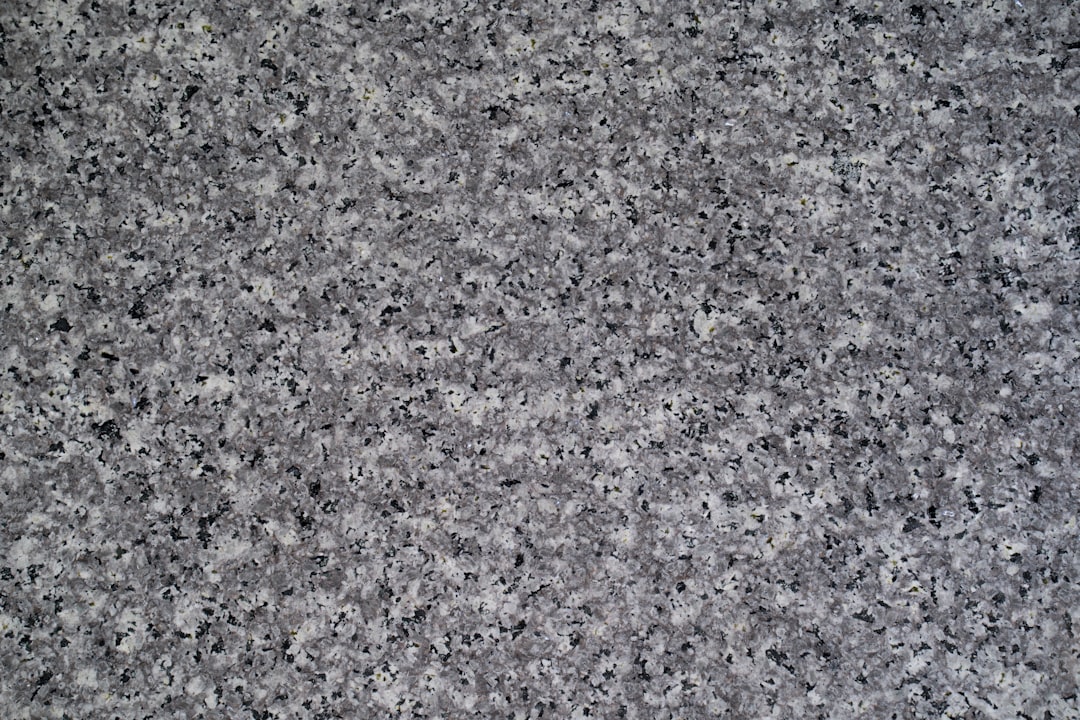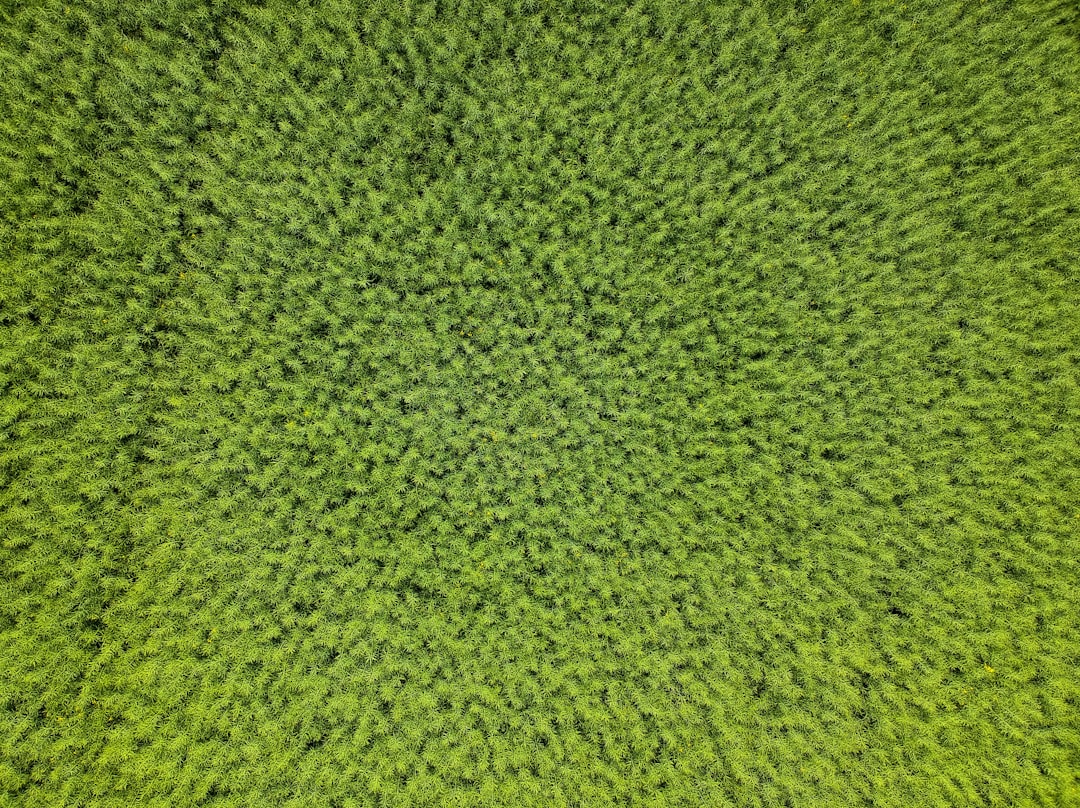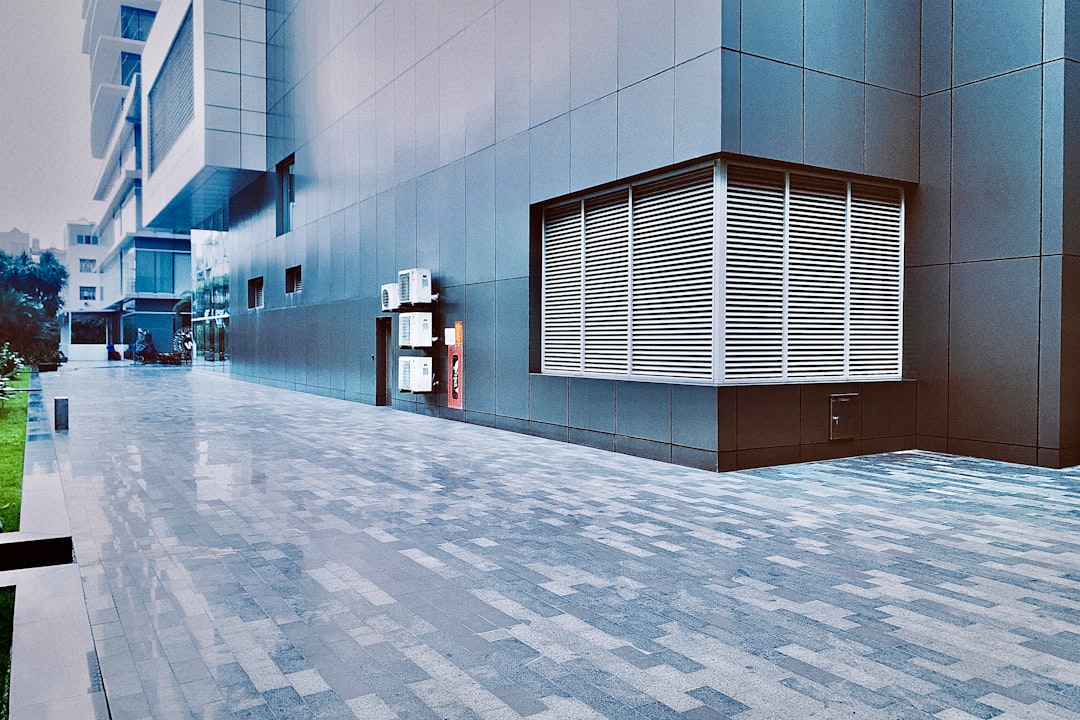

Engage prospects with a scan and streamline customer engagement with FREE QR code marketing tools by Sona – no strings attached!
Create a Free QR CodeFree consultation

No commitment

Engage prospects with a scan and streamline customer engagement with FREE QR code marketing tools by Sona – no strings attached!
Create a Free QR CodeFree consultation

No commitment
In today’s digitally driven world, QR codes have evolved from novelty to strategic powerhouse in bridging offline engagement with online action. For commercial carpet cleaning services, they create a direct link between physical brand touchpoints and measurable digital actions. Scans from invoices, trucks, jobsite signage, and trade show brochures can trigger instant quote requests, feedback forms, and booking flows that feed real-time data into your CRM.
Many providers still rely on printed brochures, manual call-backs, and untracked mailers. Prospects interact with these materials, then disappear without a trace, making attribution nearly impossible and follow-up inconsistent. QR codes solve this problem by making every offline touch interactive, measurable, and attributable to outcomes that matter: higher-quality leads, faster responses, and stronger customer retention.
When integrated thoughtfully across the customer journey, QR experiences convert anonymous interest into known demand. They also sharpen your strategy with live analytics that reveal which placements, messages, and channels actually drive bookings, reviews, and repeat business. With dynamic platforms like Sona QR, you can update campaigns without reprinting and automate follow-ups, turning everyday materials into a reliable growth engine.

Too often, high-value prospects explore your services but are never tracked because they are not ready to complete web forms or call directly. This common pain point means prime opportunities are lost before they ever enter the CRM. QR codes bridge this gap between physical touchpoints and digital conversion, allowing every brochure or invoice to trigger a seamless customer journey.
Replace analog friction wherever it lives. A flyer with a phone number alone becomes a dead end after hours. A paper satisfaction survey gets lost with the work order. A postcard invite to request a quote gets tossed before the recipient types your URL. By adding QR codes that pre-fill forms, open SMS threads via QR codes for SMS, and route scans to optimized landing pages, you shorten time to response, reduce manual entry, and capture intent while it is fresh.
Step-by-step guidance for meaningful growth:
With the right system in place, these steps transform previously anonymous or missed interactions into high-fit leads and actionable sales opportunities. Platforms like Sona QR support this transformation end-to-end, from creating dynamic QR codes and routing scans by context to syncing contacts, measuring revenue impact, and optimizing campaigns without reprinting a single asset. Start creating QR codes for free.

A persistent frustration in commercial carpet cleaning is the lack of visibility into which prospects are interacting with your business but not converting. Facility managers and business owners often browse printed materials, visit your site, or notice your crew onsite yet remain anonymous, so your marketing efforts go unmeasured and unoptimized. QR codes in marketing bring transparency to these moments by turning offline interest into online engagement that is trackable and attributable.
For operations and sales teams, speed and clarity are everything. Prospective accounts compare multiple providers, procurement requires documented compliance, and multi-location facilities need quick access to insurance certificates and references. A QR scan reduces the steps to action from many to one: scan, submit, confirm. The result is faster cycle times, less manual data entry, and better outcomes for both first-time and repeat business.
Key reasons QR codes are crucial for the industry:

Static print materials are limited because they cannot respond to context. QR codes add interactivity and flexibility that help you capture intent, validate credentials, and accelerate booking. By choosing the right format for the job, you make it effortless for prospects to take the next step and for your team to measure what works.
Dynamic QR solutions are particularly powerful in commercial services. You can change destinations without reprinting, A/B test landing pages, and tag scans with UTM parameters to analyze performance. Whether you are connecting a facility manager to a quote form or an occupant to a satisfaction survey, the format should match the task.
Effective QR formats for carpet cleaning marketing include:
Dynamic QR codes generated in platforms like Sona QR allow centralized management of these formats, so you can monitor performance, refine destinations, and scale usage across all teams without adding operational overhead.

Many of the highest-intent interactions happen in physical spaces: a facilities director passes your truck in a parking lot, a tenant sees your team working in a lobby, or a property manager reads your invoice after an excellent job. Historically, those moments generated little measurable value. QR codes change that by embedding a smart call to action exactly where attention is focused.
To maximize ROI, look for placements where your brand is already present and prospects have a reason to act. Add clear CTAs next to every code, make the benefit explicit, and use strong visual framing so the code stands out. Rotating the offer based on the context can also lift conversion; for example, “Scan to verify COI” on jobsite signage, versus “Scan for a same-week estimate” on a truck panel.
Key growth opportunities for QR deployment:
Using dynamic codes, you can rotate destinations by time of day, update offers mid-campaign, and suppress codes that saturate. Over time, these placements compound into a reliable stream of attributable leads.

Waiting for inbound calls or manual form fills leaves money on the table. QR codes let you proactively capture intent signals and convert interest on the spot, often within seconds. They are especially effective when aligned with specific outcomes such as faster quotes, better reviews, or higher compliance confidence.
The following use cases are proven to lift engagement and conversion when implemented with clear CTAs and mobile-optimized destinations. Pair each with automated workflows in your CRM to ensure scans become conversations, not dead ends.
Strategic use cases include:
Modern platforms like Sona QR let you tailor destinations by audience segment and A/B test copy and design to analyze which use cases drive the largest impact on pipeline velocity and retention.
Every scan is a data point: who engaged, where they were, what they wanted, and how urgently they acted. By deploying unique QR codes across journey stages, you can segment audiences automatically and push those segments to email, SMS, and paid media for laser-focused follow-up.
Segmentation is especially valuable in commercial services because buyers vary widely. The needs of a corporate facilities manager are different from those of a property management firm or a franchise owner. Scans can identify role, intent, and timing, then trigger the right message at the right moment.
Here is how to turn scans into high-value audiences:
With Sona QR, every code becomes a smart entry point into your funnel. Scan data is captured, enriched, and synced in real time, which makes retargeting based on actual behavior both simple and effective.
QR codes connect the offline and online halves of your marketing ecosystem, turning unmeasurable materials into accountable channels. They also create a consistent, low-friction experience for buyers who prefer to act on their own terms, using the device in their hand.
To get the most value, embed QR codes across the media you already use. Make sure each destination is tailored to the context and optimized for mobile, and tag every link with UTM parameters to compare performance by channel, message, and placement.
Ways to maximize cross-channel impact:
With a platform like Sona QR, you can manage codes centrally, keep destinations current, and synchronize scan data with your CRM. This creates an offline-to-online funnel that is both cohesive for buyers and measurable for your team.
Commercial carpet cleaning providers often cite late or missed lead capture and the time sink of manual follow-ups as key obstacles to growth. A disciplined, repeatable checklist helps your team deploy QR campaigns quickly, measure what matters, and scale the plays that work.
Think of this checklist as your operating system for QR-driven growth. Use it to standardize how you choose use cases, craft CTAs, manage scan data, and optimize results over time. Small teams can move fast when the steps are clear and tightly integrated with existing tools.
Identify a specific outcome and audience, then pick the moment where a QR scan is most likely to occur. For example, capture quote requests from facility managers at priority accounts by adding “Scan to schedule a walkthrough” to leave-behind materials. This shift moves you from passive waiting to active, trackable engagement.
Define success criteria before launch. For quotes: target number of scans per week, median time to first contact after scan, and conversion rate to scheduled assessment. For reviews: target response rate and star rating lift in key directories.
Choose dynamic QR codes for any campaign that requires tracking, editing, or attribution. Dynamic codes let you update destinations, add UTM tags, and segment by asset without reprinting. Static codes are acceptable for evergreen resources like a PDF brochure, yet you lose the ability to optimize or measure effectively.
If you plan to scale, standardize on dynamic codes from the start. Use Sona QR to generate codes, manage destinations, and centralize analytics for scan volume, device type, and location.
Make the code unmistakably scannable and clearly useful. Add your logo in the center, use brand colors for the frame, and include a benefit-driven CTA such as “Scan for a 2-minute quote” or “Scan to verify COI.” Ensure sufficient contrast and whitespace for fast scanning.
Test across devices, angles, and lighting. Print samples at the actual size for each placement: invoices, vehicle wraps, banners, and postcards. Confirm scannability from typical distances and viewing heights, and ensure the landing page loads fast on mobile connections.
Start with the placements that align most closely to your goals. If your primary objective is to increase quotes, prioritize invoices, direct mail to target accounts, lobby signage in buildings where you are active, and vehicle panels on high-traffic routes. For review generation and referrals, focus on post-service materials and email signatures.
Roll out in waves so you can isolate impact by channel. Assign unique codes per asset and location, then compare performance. As winners emerge, invest in higher-visibility placements and additional creative variations.
Instrument everything. Use UTM parameters to tag source, medium, and campaign for each code. In Sona QR, monitor scans by time and location, then connect to Sona for identity resolution and multi-touch attribution. Route high-intent scans to sales in real time via CRM workflows.
Improve incrementally by A/B testing landing page headlines, form lengths, and CTAs. Trim steps to reduce drop-off. Refresh creative seasonally and rotate offers to prevent fatigue. Feed insights back into your overall marketing plan, and build a quarterly rhythm to update assets based on performance data.
With a robust system and disciplined execution, even a small team can convert ordinary assets into dependable growth channels, each contributing to a more predictable and measurable pipeline.
Measuring the impact of offline marketing is difficult without the right instrumentation. In commercial carpet cleaning, where many interactions occur in physical spaces and across multiple stakeholders, it is essential to know which placements and messages actually produce revenue. QR analytics close this loop by connecting scans to CRM activity and, ultimately, to bookings and renewals.
A strong analytics approach captures both the micro-metrics and the macro story. You should see scan counts, device types, and peak times, but more importantly, you should understand how scans translate into qualified opportunities, proposals, and closed deals. This clarity makes it easier to defend budgets, expand winning plays, and retire underperforming assets.
How modern analytics address this gap:
Sona QR captures real-world engagement data, while Sona.com links that engagement to buyers through identity resolution and multi-touch attribution. Together they help you connect scans to revenue, unify touchpoints across the buying journey, and make QR codes a dependable component of your growth strategy. For measurement strategy, read Sona’s guide to offline attribution.
The difference between average and exceptional QR performance often comes down to specificity: unique codes per asset, clear CTAs, and immediate next steps. Avoid treating QR as a generic link. Treat each code as a high-signal touchpoint that should trigger an automated, measurable workflow.
Choose the practices that fit your media mix and funnel priorities, then standardize them across teams. Reinforce in field training and sales enablement so every crew member knows how to present and encourage scanning onsite.
Actionable tips:
Many companies see faster review collection and steadier referral flow after adding QR codes to post-service leave-behind materials. Over time, these signals improve search rankings, build trust with procurement teams, and stabilize your pipeline across seasons.
Traditional marketing pain points like missing valuable prospects, late capture of lead information, and poor attribution have long constrained growth in commercial carpet cleaning services. QR codes give providers the tools to reclaim these lost opportunities by making every physical surface a digital entry point and every interaction a chance to convert. The combination of frictionless engagement, automated follow-up, and end-to-end measurement turns static assets into reliable performance channels.
Success comes from specificity and systems. Align QR use cases to buyer intent, design for the environment, assign unique codes per asset, and measure outcomes from scan to revenue. With platforms like Sona QR for code management and Sona.com for identity resolution and attribution, you can connect offline interest to real pipeline and optimize continuously. By weaving QR codes through your marketing, sales, and operations, you will accelerate quotes, improve retention, and create a measurable path to sustained growth.
QR codes have transformed commercial carpet cleaning services from traditional marketing tactics into dynamic, measurable lead generation channels. Whether it’s capturing new customer inquiries, enhancing client interactions, or streamlining booking processes, QR codes replace outdated methods with instant, mobile-friendly access—turning every flyer, invoice, or vehicle decal into a powerful customer acquisition tool. Imagine knowing exactly which marketing efforts bring in the most qualified leads and being able to optimize your campaigns in real time.
With Sona QR, creating dynamic, trackable QR codes is effortless. Update campaigns instantly without reprinting materials, monitor scan activity closely, and directly link each interaction to revenue growth. No more guessing which strategies work—just smarter, more effective ways to grow your commercial carpet cleaning business.
Start for free with Sona QR today and transform every scan into a valuable lead, appointment, or loyal customer.
Integrate QR codes into your physical marketing materials such as invoices, trucks, signage, and brochures to create measurable digital engagement that drives quote requests, feedback, and bookings linked to your CRM.
Use dynamic QR codes across multiple channels like direct mail, vehicle panels, event booths, and facility signage with clear calls to action to capture leads, automate follow-ups, and track conversions for continuous optimization.
Deploy QR codes that open pre-filled forms, initiate SMS requests, or route to mobile-optimized landing pages at high-attention points to shorten response times, capture intent, and enable automated CRM workflows.
While the article focuses on marketing, it suggests using QR codes linked to dynamic pricing sheets or instant estimate calculators that can be updated without reprinting, improving pricing transparency and customer engagement.
Use QR codes in digital or physical business cards to allow prospects to instantly save contact details, reducing errors and making follow-up easier, especially at trade shows or networking events.
QR codes bridge offline materials and online actions, making prospect interactions measurable, reducing manual entry, accelerating response times, and improving lead attribution and customer retention.
Place QR codes on service invoices, facility entrance signage, company vehicles, event booths, trade show materials, and direct mail campaigns where customer attention and intent are highest.
Dynamic QR codes linking to web landing pages, forms, vCards, SMS or email messages, and Wi-Fi access are effective because they can be updated, tracked, and tailored to specific customer actions.
Use platforms that capture scan data with context like location and time, integrate with CRM and marketing automation tools for lead scoring, and monitor conversion metrics to optimize campaigns continuously.
Set up scan-triggered workflows in your CRM to create or update contact records, send acknowledgment messages, assign sales reps, and schedule follow-up calls to respond quickly and improve conversion rates.
Use Sona QR's trackable codes to improve customer acquisition and engagement today.
Create Your FREE Trackable QR Code in SecondsJoin results-focused teams combining Sona Platform automation with advanced Google Ads strategies to scale lead generation

Connect your existing CRM

Free Account Enrichment

No setup fees
No commitment required

Free consultation

Get a custom Google Ads roadmap for your business






Launch campaigns that generate qualified leads in 30 days or less.
